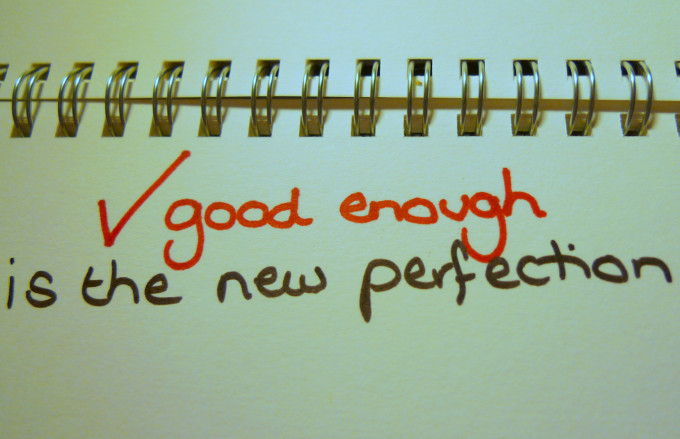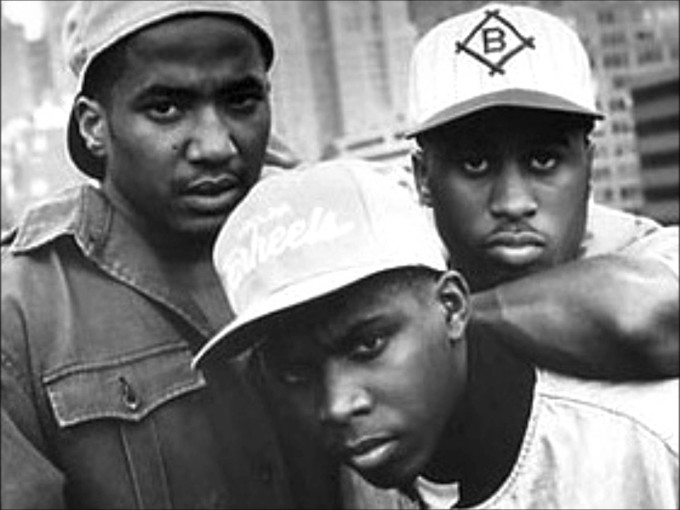 “Never forget son, people will forget your name or forget your face but they will never forget how you made them feel.”
“Never forget son, people will forget your name or forget your face but they will never forget how you made them feel.”
– Monica Zeller
I know you’re probably wondering who Monica Zeller is, but if you know me, you already know a whole lot about her.
See, Monica was my grandmother – and one of the most formative influences in my family life – which, whether they’d like to admit it or not, was structured as a strictly matriarchal society. The women were in charge, and my grandmother wouldn’t have it any other way. I’m not sure if she even knew another way, really.
My grandmother was a font of great phrases, homespun sayings and anachronistic aphorisms; I remember so many of these great little turns of the phrase she taught me. Every one of them, in retrospect, also carried with it some sort of life lesson, like “you can win over more people with persuasion and honey than vitriol and vigor.”
That’s as true now as it was when I first learned that expression as a child.
It’s this skill, I suppose, that’s helped me build a successful career as a recruiter, despite the constant ups and downs that come with more or less being the professional equivalent of the canary in the macroeconomic coal mine, a never ending series of ups and downs that I cannot control.
That’s why my grandmother’s words, while more than likely a loose paraphrasing of Maya Angelou, still resonate with me, even after all these years.
Because there is one thing that always has been, and will always, be mine to control – and it’s a burden, unfortunately, I have to bear alone.
That is to say, while I might not be responsible for some of the situations, personal or professional, that I might find myself in, I bear full accountability, and responsibility, for the way I choose to handle these situations.
The Low End Theory.
 Now, please understand that I’m by no means apologizing for anything I might have done in the past, nor am I for that matter trying to indemnify myself in the future. Shit happens, and sometimes, it’s my own damn fault for stepping in it.
Now, please understand that I’m by no means apologizing for anything I might have done in the past, nor am I for that matter trying to indemnify myself in the future. Shit happens, and sometimes, it’s my own damn fault for stepping in it.
But my, uh, passionate and somewhat spontaneous personality (and propensity to get real emotional, real quick) is who I am, an enigma wrapped in a riddle tied with a bow of confusion, really.
But I digress. Let me tell you where I’m going with all of this.
We can sit around and talk until we’re blue in the face (and do) about how important candidate experience is, how ethical we are in our recruiting, how the employer brands we represent are genuinely great corporate citizens and even better companies to work for.
Well, you know what? I call BS. Hey, someone finally had to. The thing is, no one actually gives a shit about any of this stuff we pay so much lip service to; these spurious concepts represent nothing more than a Potemkin village for passive candidates. Whatever helps you sleep at night, I suppose.
While recruiters are busy polishing a turd that they have no hope of ever making shine, the whitewash is peeling off the very walls of our workforce, revealing a historically unprecedented amount of pent up animosity, hatred, anger and inner rage that’s been simmering under the surface for quite a while now. And it looks like Pandora’s Box might finally be opening for recruiters and employers, bringing with it a genuine distrust and underlying disrespect for recruiters and the profession we practice each and every day.
Even though we’re doing the best we can, it’s becoming clear that our best really isn’t good enough.
The Scenario.
 Our profession stands today at a critical crossroads, and what we do now will forever determine the future (or lack thereof) of the talent acquisition function. Our decision is incredibly important, and if we continue along the path we’re on, it’s clear that our very existence could be torn apart by the extreme voices of the “influencer” and “thought leader” echo chamber.
Our profession stands today at a critical crossroads, and what we do now will forever determine the future (or lack thereof) of the talent acquisition function. Our decision is incredibly important, and if we continue along the path we’re on, it’s clear that our very existence could be torn apart by the extreme voices of the “influencer” and “thought leader” echo chamber.
Those of us who are actually on the front lines are allowing our public image to be shaped by the cult of would be (and mostly, never were) recruiting “experts” whose voices drown out the sensible and moderate among us. It is, in fact, a dangerous time for our profession – that is, if we can even still call it that.
You see, recruiting today has become inundated with an epidemic of unprofessionalism to the extent that the function has functionally ceased to be recognizable to those of us who have made helping others find work our lives’ work, and I know I’m not alone when I say that the state of things makes OG recruiters like me miss the good old days when we were first getting started. But the Golden Age of Recruiting has dulled to the point of darkness.
The light that used to guide so many of us has more or less faded to a flicker. And I’m afraid it’s close to blowing out forever, for all of us. If I have to get a real job, I’m going to be pissed. It’s not too late to turn the tide on the unprofessional behavior plaguing our profession. But it’s going to mean making some real changes to the way we recruit.
I promise you, though, it’s going to be worth it for those of us who care enough to finally draw a line in the sand and make our final recruiting stand. We’ll see who survives the nuclear winter of the next economic downturn.
But I’ve done it before, and I’m pretty damn sure I’ll do it again.
People’s Instinctive Travels and the Paths of Rhythm.
 “We’re all going to die, all of us, what a circus! That alone should make us love each other but it doesn’t. We are terrorized and flattened by trivialities, we are eaten up by nothing.”
“We’re all going to die, all of us, what a circus! That alone should make us love each other but it doesn’t. We are terrorized and flattened by trivialities, we are eaten up by nothing.”
–Charles Bukowski
There’s been an increasingly intense, increasingly rancorous tone to the recruiting related banter of ugliness being flung on Facebook and Twitter each and every day. It’s becoming increasingly impossible to miss, really.
It’s the tenor of this conversation that has me the most worried about the health of our profession – what used to be collegial has become a death match for share of voice, and a death march that only proves the people who distrust or dislike recruiters are probably right about us, after all. The bad vibes are everywhere, and they’re poisoning us all.
Don’t believe me? Take a look at the way this is all spreading – all you have to do is turn on a computer, pretty much, and you’ll be able to see plenty of examples of what I’m talking about without really having to dig all too terribly deep – from the manifold recruiting related Facebook Groups to the comment section of blogs to the links we share on LinkedIn, it’s clear to see just how much bad blood exists within what used to be one big recruiting family.
Sounds corny, I know. But it’s true. We used to all be on the same side, even when we were in direct competition. Now, it’s every man for himself, and man, it’s kind of a lonely existence. I want to go back to the way things were, because the way things are going scare the absolute shit out of me.
Something about the mix of passive-aggressive remarks of people being pissed off at getting left off the most recent Top 50 Whatever HR Keyword We’re Targeting List on some blog you’ve never heard of before (and let’s face it, these lists have no foundation in any science beyond the alchemy that is social media metrics) and sweepingly self-aggrandizing behavior triggers some sort of nauseous (visceral) reaction in me.
That sinking feeling in the pit of my stomach only gets made worse when I see some poor sap getting smashed on social for putting out an opinion that doesn’t conform to the “thought leadership” norm. Yeah – go ahead and say phone sourcing is archaic and how Boolean is obsolete at your own risk, and don’t say I didn’t warn you.
Somehow, these antiquated trending topics live on because of social media, which, if you think about it, kind of defeats the entire point of the argument, really.
Or am I the only one who sees that?
Beats, Rhymes & Life.
 I recently read an article on email aggregation written by three very well known, well respected sourcers, and while the advice was topical and more or less on point, that still didn”t deter the trolls from coming out from under the bridge and taking the authors to task in the comment section about the relevancy (or lack thereof) of what I thought was a pretty decent post, all things considered.
I recently read an article on email aggregation written by three very well known, well respected sourcers, and while the advice was topical and more or less on point, that still didn”t deter the trolls from coming out from under the bridge and taking the authors to task in the comment section about the relevancy (or lack thereof) of what I thought was a pretty decent post, all things considered.
One of the authors and myself, watching the comment string quickly turn from constructive to cutthroat, decided to intervene and call out one of the worst offenders for his complete lack of commenting decorum (or any semblance of humanity, for that matter).
I attempted, in my response, to at least try to add a little value to the conversation by adding some commentary explaining that even though there’s a lot of dead weight in the industry, there’s a continuous infusion of new sourcers and recruiters swelling our collective ranks each and every day.
It’s these neophytes, who have yet to pick up the bad habits and pervasive cynicism of our more veteran counterparts, that give me what little hope I have. ‘
I, for one, would like to see the new recruiters entering our industry given the tools, technologies and training they need to source, engage and convert top talent the right way. If you’re a recruiter, you should be rooting for the newbies as well.
The better training and the more mentorship we’re able to provide to our less experienced counterparts, the better equipped they’ll be to represent the profession with consummate professionalism, doing right by doing good. As they advance through the ranks, the best practices we teach them today might just make the difference when it comes to seeing our profession survive – and thrive – tomorrow, too.
When less experienced recruiters succeed, we all win; that is, if they’re doing it the right way. Reinforcing and modeling exactly what that right way is our job. If we can’t get it right, we might not have many of those in the not too distant future, the way things are heading.
For all the knocks that trainers and professional educators take – and let’s be real, they have one hell of a hard job – they have an intrinsic understanding of two imparative concepts: mentoring and collaboration. The more experienced among them already know that new teachers (or veteran ones) can’t hope to get any better at their craft without leveraging the collective years of knowledge and professional practice their colleagues have collected over the years.
In recruiting, however, this sort of knowledge sharing seems sporadic, occurring more in isolated pockets than as an industry wide strategic initiative. Of course, a big reason that the necessary support structures for professional training and development aren’t really there in recruiting is that there’s no universal method nor unilateral approach for sourcing, screening or selecting candidates.
It’s an art as much as a science, and your recruiting abilities are developed through applied practice, not imparted theory, as is the case in so many other disciplines.
The Lost Tribes.
 Unlike more formalized functions like PR, payroll or even product marketing, most of us are just making this up as we go along. Almost no one went to school to be a recruiter. Hell, how could we?
Unlike more formalized functions like PR, payroll or even product marketing, most of us are just making this up as we go along. Almost no one went to school to be a recruiter. Hell, how could we?
Most of us had the good fortune of having recruiting somehow find us somewhere along the way, but it’s not like we went out looking for jobs helping people find jobs. With no barriers to entry, many of us just kind of wandered in here one day and ended up staying for the course of our careers.
And we’ve been teaching ourselves as we go ever since.
It doesn’t have to be this way. We’d be wise to take a page from our L&D counterparts and start focusing on building a culture of collaboration, constructive conversation and collegiality. Let’s go from being seen as some sort of HR backwater and start rebuilding the perception of our profession as the critical core competency and strategic business driver recruiting really is.
What we need to do as an industry is to come together and build the future of our profession as a collective from the inside instead of letting it be torn apart by individuals on the outside.
The best way to ensure increased professionalism and improve prevailing perceptions around the recruiting profession, of course, would be if recruiters finally get together and create…wait for it…an association which can help govern our actions, provide training, learning opportunities and mentorship programs, and, most importantly, provides both external advocacy and internal support for the recruiting profession writ large.
Both myself and Pete Radloff, who helped me put together this post, can attest to the power that comes with actively participating in stuff that’s aligned with supporting our profession – and each other. The thing is, at some point, recruiting stops becoming a job and starts becoming a part of your identity, both personal and professional. As a result, many of us seem to have coalesced into a fairly tight knit community made up of members who constitute, for lack of a better word, one hell of a tribe.
Both of us, not to mention countless dozens of other volunteers working behind the scenes, are happy to help set up stuff like happy hours, lunch & learns, webinars and networking opportunities on our own time, with our own dime.
I know that sounds crazy, but because we’re a tribe, we know that we’re all in this together, and each of us has a critical stake in helping raise the bar on the level of professionalism by which recruiters are expected to operate. Similarly, a professional association would work not only to set these standards, but ensure we’re able to ultimately be accountable to each other.
That’s what tribes do.
The Love Movement.
 Of course, it’s not just here in the DC area that these sort of community based, grassroots recruiting initiatives are popping up. Consider Bill Boorman’s #TruMunity, a series of unconferences that have brought thousands of talent acquisition professionals together across hundreds of cities all over the world, and has been doing so for years now.
Of course, it’s not just here in the DC area that these sort of community based, grassroots recruiting initiatives are popping up. Consider Bill Boorman’s #TruMunity, a series of unconferences that have brought thousands of talent acquisition professionals together across hundreds of cities all over the world, and has been doing so for years now.
The main mantra driving #Tru is to create an environment where new and experienced recruiters alike can come together and talk about the topics and issues that matter most to them, and know they’re doing so in a safe, supportive and non-judgemental place – and in this case, IRL beats online every day of the week.
While #Tru has built a brand on the basis of real recruiters really keeping it real in real life, its model is set-up to add value and democratize access to anyone who wants to attend by asking for a nominal donation to help keep the wheels turning, an amount that’s anything but mandatory. People like Bill aren’t in this for the money, but somehow, are able to provide an invaluable learning experience that everyone walks away from, somehow, feeling good (and even excited) about the future of our profession. And you know what? No one has ever said that they wasted their time or didn’t have a learning experience.
Movements like #Trumunity give the rest of us out there in recruiting a great model to follow, proving you can provide a ton of value value without costing a ton of money or time, too.
So, why not build our own National Recruiting Association? Why not work together and be part of a collective that can help provide direction for junior recruiters and sourcers while helping repair our collective reputation and rebuild the trust that so many of us have lost from our candidates, clients and colleagues?
It seems like a pretty simple, straightforward solution to a pretty complex and convoluted set of challenges plaguing our profession. Even an incremental improvement or iterative step in the right direction would be better than simply standing back and doing nothing, as is too often the case today. I’m sick of watching Rome burn, and I’m not fiddling anymore.
Look. The whole agency versus in-house battle royale is really played out and kind of old hat by now, and I think we need to stop berating other recruiting professionals. It doesn’t matter where you recruit.
What really matters is how you recruit, and I truly believe that a professional association can create a way to improve our communication, strengthen our community and provide a powerful platform – and collective voice – for our entire industry. I know that sounds a little bit naive, but I don’t think we’re tilting at windmills.
We’re reaching for the stars.
Find A Way.
 That’s why I’m so excited by the work that Pete, myself and a select group of some of our more esteemed colleagues have been doing the past few months to start laying the foundation for this much needed (and long overdue) National Recruiting Association – a group that’s being built by recruiters, for recruiters.
That’s why I’m so excited by the work that Pete, myself and a select group of some of our more esteemed colleagues have been doing the past few months to start laying the foundation for this much needed (and long overdue) National Recruiting Association – a group that’s being built by recruiters, for recruiters.
Real recruiters, that is; one of the best parts of coalescing around a professional association is that the very existence of this kind of formalized group will allow us to not only set standards, but also start weeding out the RINOs and LIONs and Robert Half recruiters of the world.
Through this sort of association, we can replace the so-called “thought leaders,” “career coaches” and “recruiting rock stars” (gag) with real talk about the stuff that really matters to real recruiters instead of letting some talking head or “personal branding guru” set our professional agenda for us.
It’s time recruiters took back recruiting.
This is an important first step to getting us away from the infighting and the backstabbing and bitching and moving the recruiting conversation – and vocation – to a higher standard. Which, let’s face it, recruiting desperately needs right about now.
While I know I’m being a little obtuse, we wanted to make sure we were able to offer you the chance to help as we build this association from the ground up. If you’d like to be a part of what we’re working on, we’ll be happy to fill you in on the details. Just drop me or Pete a line (I’m [email protected], by the way, if you’re old school) or leave a comment in the space below and let’s get you onto the team. Hopefully, we’ll be able to cross paths at a conference, grab a drink or even just set up a brief phone call and figure out how we can work together to make this work for all of us.
We want your ideas, we want your thoughts, and we need your passion if we’re really going to make this thing work. But the good news is, we’re getting there – and we’d love some help. Because we can’t do this by ourselves. So help a brother – and a profession – out and join a movement that’s actually trying to move our profession forward for the right reasons.
The cost of staying silent and doing nothing to change the course of our profession is a future where top recruiters actually look like Top Recruiter. The choice is yours. #TrueStory
Additional Reporting (and Snark) Provided by Pete Radloff.
 About the Author: Derek Zeller draws from over 16 years in the recruiting industry. The last 11 years he has been involved with federal government recruiting specializing within the cleared Intel space under OFCCP compliance. Currently, he is a Senior Technical Recruiter for Oracle.
About the Author: Derek Zeller draws from over 16 years in the recruiting industry. The last 11 years he has been involved with federal government recruiting specializing within the cleared Intel space under OFCCP compliance. Currently, he is a Senior Technical Recruiter for Oracle.
He has experience with both third party agency and in-house recruiting for multiple disciplines and technologies. Using out-of-the-box tactics and strategies to identify and engage talent, he has had significant experience in building referral and social media programs, the implementation of Applicant Tracking Systems, technology evaluation, and the development of sourcing, employment branding, military and college recruiting strategies.
You can read his thoughts on RecruitingDaily.com or Recruitingblogs.com or his own site Derdiver.com. Follow Derek on Twitter @Derdiver or connect with him on LinkedIn.
 About the Author: Pete Radloff has 15 years of recruiting experience in both agency and corporate environments, and has worked with such companies as Comscore, exaqueo, National Public Radio and Living Social.
About the Author: Pete Radloff has 15 years of recruiting experience in both agency and corporate environments, and has worked with such companies as Comscore, exaqueo, National Public Radio and Living Social.
With experience and expertise in using technology and social media to enhance the candidate experience and promote strong employer brands, Pete also serves as lead consultant for exaqueo, a workforce consulting firm.
An active member of the Washington area recruiting community, Pete is currently a VP and sits on the Board of Directors of RecruitDC.
Follow Pete on Twitter @PJRadloff or connect with him on LinkedIn, or at his blog, RecruitingIn3D.





 Nice Body: Creative Email Content.
Nice Body: Creative Email Content.
 Working in a company with less than 10 employees has its perks. For one thing, there’s a lot less politics.
Working in a company with less than 10 employees has its perks. For one thing, there’s a lot less politics.






 There are people in this world who do not use
There are people in this world who do not use 
 Me: Listen, just keep up here. Now, see on this page? Those are your second degree connections.
Me: Listen, just keep up here. Now, see on this page? Those are your second degree connections. Me: Shall we move on?
Me: Shall we move on? u know already, you can’t talk to “2’s”, when you sign up for notifications they only show up sometimes, and LinkedIn hates New Jersey. And to top it all off, there’s an anonymous zombie person wandering around. Are you sure this isn’t the anti-social network?
u know already, you can’t talk to “2’s”, when you sign up for notifications they only show up sometimes, and LinkedIn hates New Jersey. And to top it all off, there’s an anonymous zombie person wandering around. Are you sure this isn’t the anti-social network?


 While there are a lot of great software products out there for the HR and recruiting market, let’s face it. You’ve got a limited budget, and even more limited time.
While there are a lot of great software products out there for the HR and recruiting market, let’s face it. You’ve got a limited budget, and even more limited time.





 Do you know what
Do you know what 
 Oddly enough, it feels really good to communicate through slack. Earlier today I was on the phone with a co-worker, and we moved the conversation to slack. What we were discussing didn’t
Oddly enough, it feels really good to communicate through slack. Earlier today I was on the phone with a co-worker, and we moved the conversation to slack. What we were discussing didn’t Quintin Ford is a recruiter and entrepreneur focused in the areas of tech, media and finance. He believes in building solid, long-lasting relationships with his candidates and clients. Quintin is interested in forward thinking recruitment technology. Much of his day is focused on finding or developing smart, simple recruitment solutions that are flexible, efficient and productive. He is the founder of
Quintin Ford is a recruiter and entrepreneur focused in the areas of tech, media and finance. He believes in building solid, long-lasting relationships with his candidates and clients. Quintin is interested in forward thinking recruitment technology. Much of his day is focused on finding or developing smart, simple recruitment solutions that are flexible, efficient and productive. He is the founder of 
 “Never forget son, people will forget your name or forget your face but they will never forget how you made them feel.”
“Never forget son, people will forget your name or forget your face but they will never forget how you made them feel.”  Now, please understand that I’m by no means apologizing for anything I might have done in the past, nor am I for that matter trying to indemnify myself in the future. Shit happens, and sometimes, it’s my own damn fault for stepping in it.
Now, please understand that I’m by no means apologizing for anything I might have done in the past, nor am I for that matter trying to indemnify myself in the future. Shit happens, and sometimes, it’s my own damn fault for stepping in it. Our profession stands today at a critical crossroads, and what we do now will forever determine the future (or lack thereof) of the talent acquisition function. Our decision is incredibly important, and if we continue along the path we’re on, it’s clear that our very existence could be torn apart by the extreme voices of the “influencer” and “thought leader” echo chamber.
Our profession stands today at a critical crossroads, and what we do now will forever determine the future (or lack thereof) of the talent acquisition function. Our decision is incredibly important, and if we continue along the path we’re on, it’s clear that our very existence could be torn apart by the extreme voices of the “influencer” and “thought leader” echo chamber. “We’re all going to die, all of us, what a circus! That alone should make us love each other but it doesn’t. We are terrorized and flattened by trivialities, we are eaten up by nothing.”
“We’re all going to die, all of us, what a circus! That alone should make us love each other but it doesn’t. We are terrorized and flattened by trivialities, we are eaten up by nothing.” I recently read an article on email aggregation written by three very well known, well respected sourcers, and while the advice was topical and more or less on point, that still didn”t deter the trolls from coming out from under the bridge and taking the authors to task in the comment section about the relevancy (or lack thereof) of what I thought was a pretty decent post, all things considered.
I recently read an article on email aggregation written by three very well known, well respected sourcers, and while the advice was topical and more or less on point, that still didn”t deter the trolls from coming out from under the bridge and taking the authors to task in the comment section about the relevancy (or lack thereof) of what I thought was a pretty decent post, all things considered. Unlike more formalized functions like PR, payroll or even product marketing, most of us are just making this up as we go along. Almost no one went to school to be a recruiter. Hell, how could we?
Unlike more formalized functions like PR, payroll or even product marketing, most of us are just making this up as we go along. Almost no one went to school to be a recruiter. Hell, how could we? Of course, it’s not just here in the DC area that these sort of community based, grassroots recruiting initiatives are popping up. Consider Bill Boorman’s
Of course, it’s not just here in the DC area that these sort of community based, grassroots recruiting initiatives are popping up. Consider Bill Boorman’s  That’s why I’m so excited by the work that Pete, myself and a select group of some of our more esteemed colleagues have been doing the past few months to start laying the foundation for this much needed (and long overdue) National Recruiting Association – a group that’s being built by recruiters, for recruiters.
That’s why I’m so excited by the work that Pete, myself and a select group of some of our more esteemed colleagues have been doing the past few months to start laying the foundation for this much needed (and long overdue) National Recruiting Association – a group that’s being built by recruiters, for recruiters. About the Author: Derek Zeller draws from over 16 years in the recruiting industry. The last 11 years he has been involved with federal government recruiting specializing within the cleared Intel space under OFCCP compliance. Currently, he is a Senior Technical Recruiter for
About the Author: Derek Zeller draws from over 16 years in the recruiting industry. The last 11 years he has been involved with federal government recruiting specializing within the cleared Intel space under OFCCP compliance. Currently, he is a Senior Technical Recruiter for  About the Author: Pete Radloff has 15 years of recruiting experience in both agency and corporate environments, and has worked with such companies as Comscore, exaqueo, National Public Radio and Living Social.
About the Author: Pete Radloff has 15 years of recruiting experience in both agency and corporate environments, and has worked with such companies as Comscore, exaqueo, National Public Radio and Living Social.
 In recruiting we spend a whole lot of time talking about striking the balance between automation and personalization, and how best to blend high tech with high touch. But for all the talk about email blasts, talent communities and employer branding, for some reason it seems like we’re all ignoring what seems to be a pretty obvious solution to what’s become a fairly endemic problem in talent acquisition today.
In recruiting we spend a whole lot of time talking about striking the balance between automation and personalization, and how best to blend high tech with high touch. But for all the talk about email blasts, talent communities and employer branding, for some reason it seems like we’re all ignoring what seems to be a pretty obvious solution to what’s become a fairly endemic problem in talent acquisition today.

 Mike Wolford has over 9 years of recruiting experience in staffing agency, contract and in house corporate environments. He has worked with such companies as Allstate, Capital One, and National Public Radio.
Mike Wolford has over 9 years of recruiting experience in staffing agency, contract and in house corporate environments. He has worked with such companies as Allstate, Capital One, and National Public Radio.
 Last night a colleague went to Boston University to do a focus group on how undergraduate computer science majors perceive various aspects of a company’s employer brand. The results were quite interesting…
Last night a colleague went to Boston University to do a focus group on how undergraduate computer science majors perceive various aspects of a company’s employer brand. The results were quite interesting…
 Remember how no one wanted to apply to the test company once they saw the Glassdoor rating? Take a step back – remember that only 25% wanted to apply based on the job description – and this isn’t top talent. This is for undergrads who don’t have any experience!
Remember how no one wanted to apply to the test company once they saw the Glassdoor rating? Take a step back – remember that only 25% wanted to apply based on the job description – and this isn’t top talent. This is for undergrads who don’t have any experience! Phil Strazzulla is the CEO of
Phil Strazzulla is the CEO of 
 I hate interviews. And I know I’m not the only one. Hell, I’m pretty sure I’ve never met anyone who actually claims to enjoy interviews, and that includes recruiters.
I hate interviews. And I know I’m not the only one. Hell, I’m pretty sure I’ve never met anyone who actually claims to enjoy interviews, and that includes recruiters. First off, there’s the logistical element involved. Before even going in, you have to find some excuse to get off work, find a tie or slacks that fit (or make that last minute trip to Marshall’s, more like), and, most dauntingly of all, find out where the hell the interview actually is in the first place.
First off, there’s the logistical element involved. Before even going in, you have to find some excuse to get off work, find a tie or slacks that fit (or make that last minute trip to Marshall’s, more like), and, most dauntingly of all, find out where the hell the interview actually is in the first place. Typically, about 20 minutes after the scheduled start time, just when you’re about caught up on breath, out of patience and about to walk on back to the parking lot, some other secretary comes out and calls your name. You think, ‘finally’ – only they’re only there to show you to another room, where there are always a million chairs and never any windows.
Typically, about 20 minutes after the scheduled start time, just when you’re about caught up on breath, out of patience and about to walk on back to the parking lot, some other secretary comes out and calls your name. You think, ‘finally’ – only they’re only there to show you to another room, where there are always a million chairs and never any windows. Sometimes, though, as the Glassdoor report demonstrated, some of these tough, effective interview questions from some of the world’s most competitive employers and biggest brands may sound a little silly, a bit strange or completely freaking weird.
Sometimes, though, as the Glassdoor report demonstrated, some of these tough, effective interview questions from some of the world’s most competitive employers and biggest brands may sound a little silly, a bit strange or completely freaking weird.










 For well over a century now, industrial and organizational psychologists have turned their collective focus towards a singular goal: trying to explain why employees behave the way that they do.
For well over a century now, industrial and organizational psychologists have turned their collective focus towards a singular goal: trying to explain why employees behave the way that they do.
 A well-defined competency framework, therefore, must vertically link the behavior of each individual employee to all of these larger organizational, strategic and business or bottom line outcome considerations, clearly linking which personal attributes and personality characteristics, skills or abilities work best within your work environment to deliver the best performance every time, all the time.
A well-defined competency framework, therefore, must vertically link the behavior of each individual employee to all of these larger organizational, strategic and business or bottom line outcome considerations, clearly linking which personal attributes and personality characteristics, skills or abilities work best within your work environment to deliver the best performance every time, all the time. About the Author: Frank Costanzo has more than 30 years of experience building and leading technology-based business enterprises across multiple industries, including education, banking, online brokerage, and publishing.
About the Author: Frank Costanzo has more than 30 years of experience building and leading technology-based business enterprises across multiple industries, including education, banking, online brokerage, and publishing.
 The Starting Line for Tech Recruiters: The Dreaded Job Description
The Starting Line for Tech Recruiters: The Dreaded Job Description

 Do you know who reads the documents you send? Like to you really know? Sure there are many tools that will send you a
Do you know who reads the documents you send? Like to you really know? Sure there are many tools that will send you a  About the Author: Dean Da Costa is a highly experienced and decorated recruiter, sourcer and manager with deep skills and experience in HR, project management, training & process improvement.
About the Author: Dean Da Costa is a highly experienced and decorated recruiter, sourcer and manager with deep skills and experience in HR, project management, training & process improvement.

 One of my favorite things in the world to do is read speaker evaluation forms, largely because I love the hate – let’s face it, if there’s one thing I think we can all agree on, it’s my ability to be polarizing. Boom.
One of my favorite things in the world to do is read speaker evaluation forms, largely because I love the hate – let’s face it, if there’s one thing I think we can all agree on, it’s my ability to be polarizing. Boom. I kind of like the guy who said I was a breath of fresh air in an otherwise pretty boring day or the woman who admired my saying ‘what’s on everyone’s mind’ quite a bit better, but you know, we’re in this weird period of time where our entire industry seems similarly split, a divide, selfishly, that shows a profession in f-ing flux, my friends.
I kind of like the guy who said I was a breath of fresh air in an otherwise pretty boring day or the woman who admired my saying ‘what’s on everyone’s mind’ quite a bit better, but you know, we’re in this weird period of time where our entire industry seems similarly split, a divide, selfishly, that shows a profession in f-ing flux, my friends.

